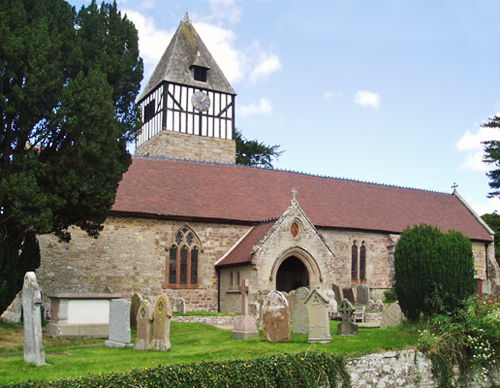St Andrew’s, Hampton Bishop, is a fine example of an ancient Herefordshire church in a small rural community just four miles from the centre of the City of Hereford, and where people have worshipped God, been baptised, married and buried for over 800 years.

The church’s most distinctive feature is its black and white timber framed belfry that tops its Norman tower. The building is constructed with local red sandstone. Much of the fabric dates from the 12th century and there are a number of well preserved features from that period including some fine Norman arches and windows, and a very simple stone font.
The building was extended to its present size over the subsequent two centuries. Most of the windows were introduced at the same time, many of which later had added some fine examples of 19th century stained glass.
The Lady Chapel has a number of interesting features:
An impressive sandstone canopied reredos dating from about the 15th century; its origin is a mystery but it appears to have come from another church.
A 14th century double piscina.
Three memorial slabs in the floor, two of which commemorate members of the Whttington family. Dick Whittington himself is reputed to have come from a village nearby.
The organ is over a hundred years old and was built by Nicholson & Lord of Walsall. It is likely that Sir Edward Elgar worked on some of his compositions here as when he lived nearby in Plas Gwyn on the outskirts of Hereford; he regularly visited the church and played the organ. The view from nearby Mordiford Bridge was the inspiration for one of his works (Elegy for String Orchestra, Op 58 composed in 1909).
The Wye Valley Walk passes within two hundred and fifty metres of the church.
Postcode: HR1 4JY
Grid Reference SO558380